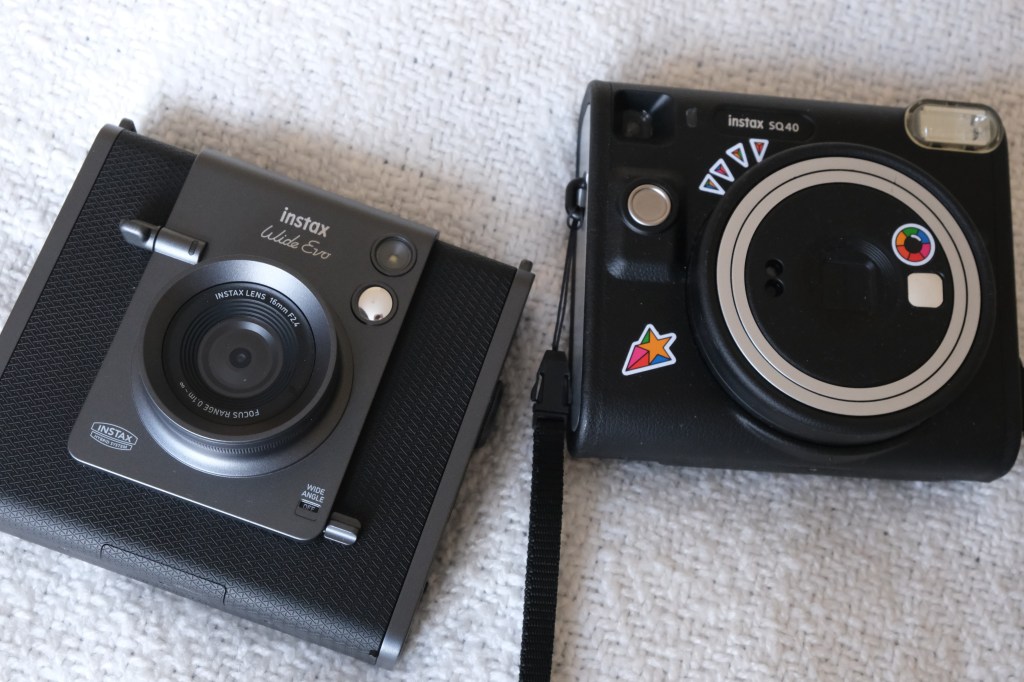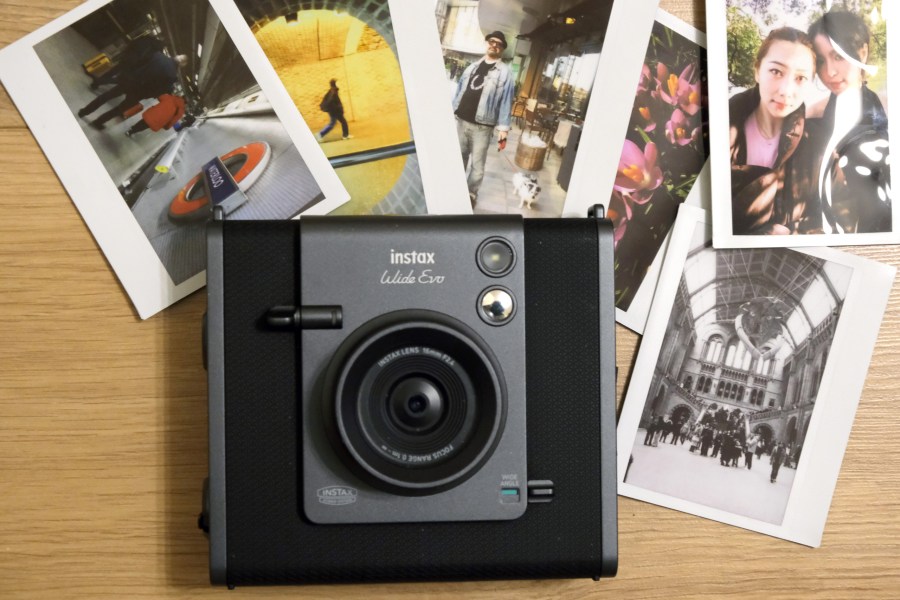The Lomo’Wide Instant is the most exciting instant camera I’ve tested so far, but for me, Instax instant and hybrid cameras still hold their own over Lomography. Here are three reasons why!
Ease of use.
Instax cameras are designed to be easy to use. And in practice, they are. I’ve used a wide range of Instax cameras, from the old Instax Mini 8 to the Instax Wide Evo and I’ve rarely ever been confused at how they work. Reading the manual gives you a greater understanding of this but it is not compulsory, especially with Instax’s instant film cameras.
The hybrid and fully digital cameras like the Instax Pal are more complex but using them is never particularly hard or complicated either.
I’ve now used two Lomography cameras. I briefly tried Lomography’s Lomo’Instant Square Glass, which is also an exciting camera. It looks beautifully retro with its lens’s foldable bellows design and comes with an Instant Mini Back that allows you to shoot Mini film as well as Square.
It took me a while to figure out where the batteries went and then I struggled to get it open. It took some force, but eventually it opened. Then came folding out the camera’s lens. Again, careful just didn’t cut it. Adding force broke the metal rail under the foldable lens that holds it in place when extended.
I’m pretty clumsy, especially when it comes to opening things like water bottles and doors. I’ve never broken an Instax camera though.
The Lomo’Instant Square Glass wasn’t done falling apart either. While taking it out to take sample photos, a lever used to adjust the zone focus just fell off, for no discernible reason other than the camera being poorly made.

I had bad luck with the first sample of the Lomo’Instant Wide Glass Lomography sent me as well. I brought it with me to Mexico City for the holidays but when I got it out to begin taking photos, it wasn’t working. Then to my horror, I also realised that the four AA batteries powering the camera had leaked. Opening the hatch was difficult but I managed it in the end. I put in new batteries, which led the camera to overheat, then work just fine for a short time until it finally quit on me for good.
The second sample thankfully didn’t give me any trouble. I was advised by Lomography not to bring it on a plane with me. This seemed an odd request but given my awful luck with Lomography cameras, I decided not to risk it.
Admittedly, Instax cameras aren’t without build quality issues. For instance, the hatch that covers the batteries on older Instax Wide cameras like the Wide 300 and Wide 210 has trouble staying on without tape (especially on older cameras). But the Wide 400 appears to have fixed this. And in my experience, Instax cameras don’t fall apart.
Lomography cameras aren’t as intuitive as Instax cameras and take some learning. Both Lomography cameras are more complex camera with more settings than the usual Instax, but the new Instax Wide Evo has shown that complex doesn’t inevitably lead to hard.
Build quality
I have reviewed seven film and hybrid cameras in the Instax line-up as well as one printer. I’ve owned two more Instax cameras and used a friend’s old Wide camera. Other than the issue ailing old Wide camera’s hatches which cover the battery, I have not broken any of these cameras.
While the glass lens on the Lomo’Instant Wide Glass and Square Glass is very impressive and sharp, the fact that two out of three Lomography cameras I’ve tried broke does not give me a lot of confidence in Lomography’s other cameras.

Instax cameras are made of plastic but it fits the charming look of older pastel-coloured Instax cameras. More recent Instax cameras starting with the Instax SQ40 have also been made of plastic but have been redesigned to appear very elegant looking. Wednesday Addams would approve of these camera’s black, white and grey colour scheme.
As a woman who grew up during the 2010s, I dread movie-style makeovers. Curly hair and glasses don’t make women ugly Hollywood! Likewise, colourful and girly-coded cameras aren’t less attractive to ‘serious’ photographers because of this.
The Instax makeover, though, isn’t a Mia Thermopolis-type makeover that completely disregards a core aspect of the makeup victim’s identity. Instax has not given up on making fun and colourful cameras. The Instax Wide 400 may not necessarily impress with its Jeep-like body and army green colour but its design still exudes fun.
Variety
Instax has arguably doubled down on catering to a specific group of photographers, but these efforts aren’t necessarily exclusionary. They are still recognizably Instax cameras at their core and these efforts are more an expansion than a complete rebrand. Instax has something for everyone, from professional photographers to more casual shooters.
Lomography tries a slightly different approach. They similarly have a unique and distinctive brand identity that sets them apart while still expanding on what is already available in the instant camera market. They are mostly made out of plastic as well, but on the whole, lean on the retro look, appearing more expensive than Instax cameras while not being particularly expensive. For example, the Lomo’Instant Wide looks like it should be really, really expensive. At $280/£249, it’s not as expensive as other similar instant cameras like the Instax Wide Evo ($349) and Polaroid I-2 ($599).
Personally, I like Instax’s efforts better and though Lomography instant cameras do have a bit of a cool factor going for them, the Instax range simply has a better range of options.
The views expressed in this column are not necessarily those of Amateur Photographer magazine or Kelsey Media Limited. If you have an opinion you’d like to share on this topic, or any other photography related subject, email: [email protected]







